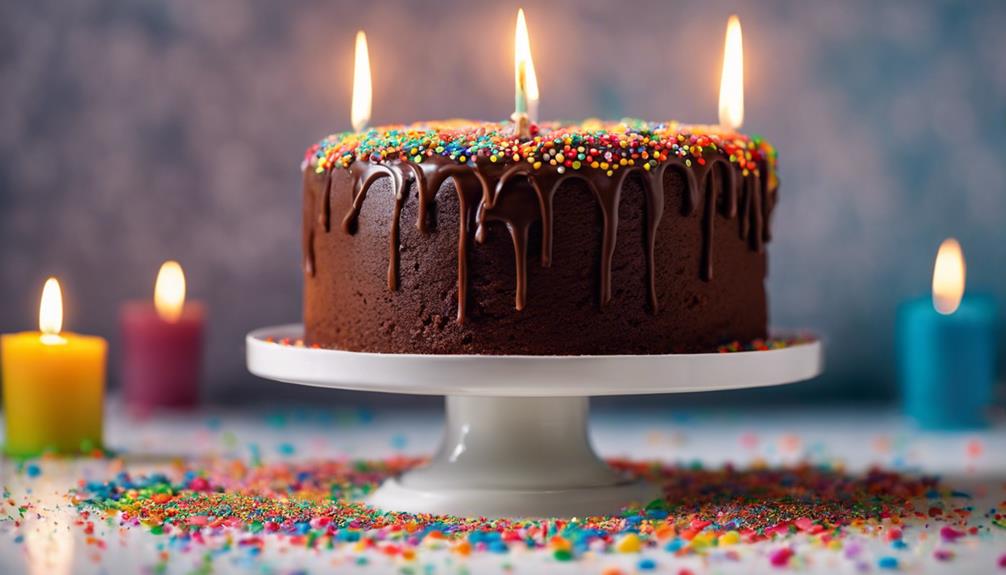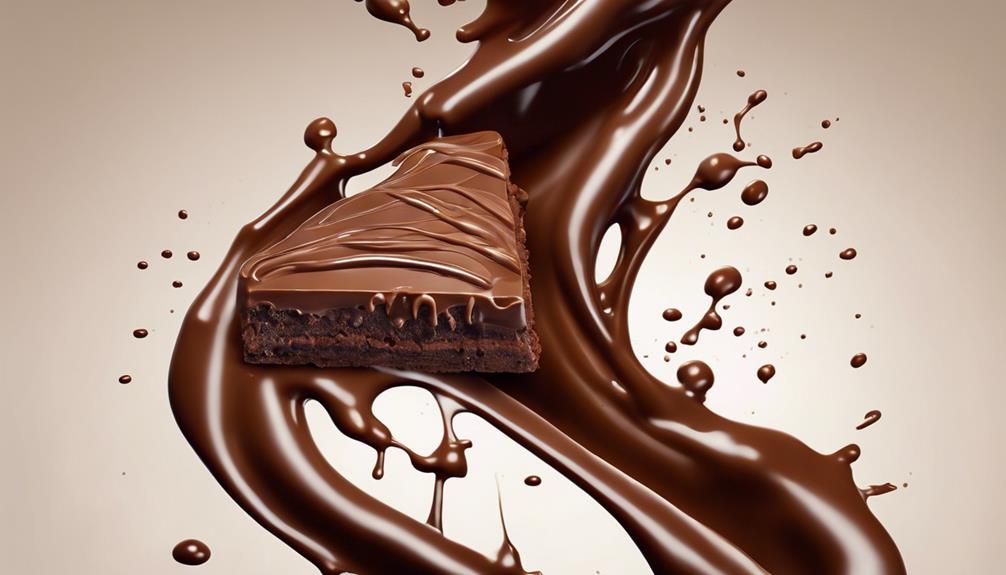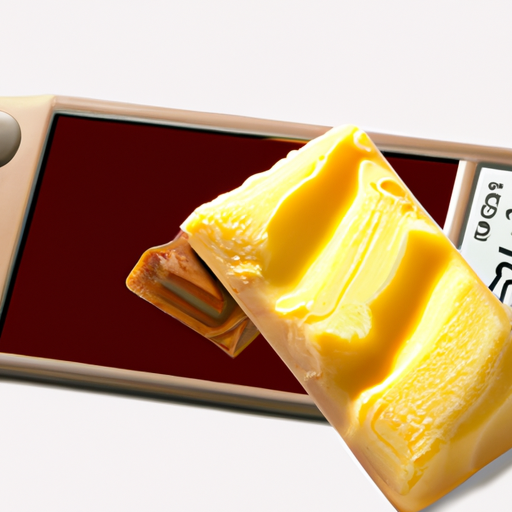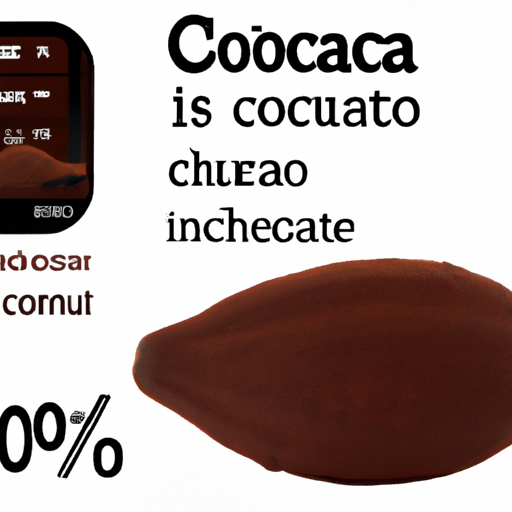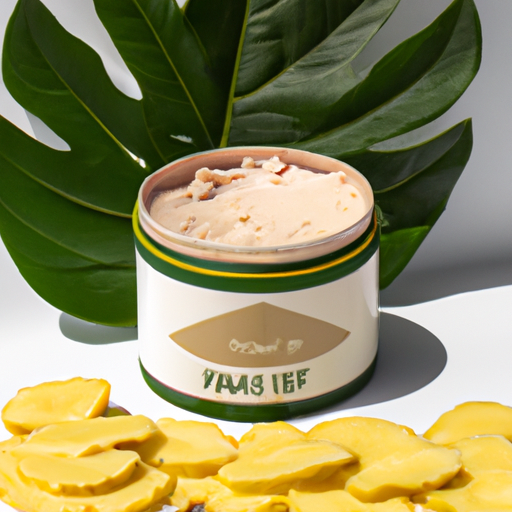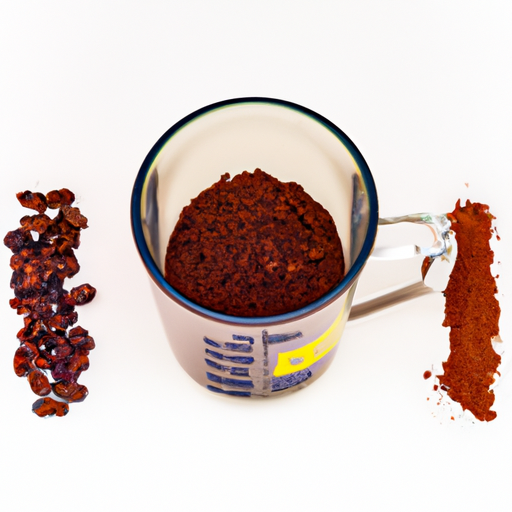For a fantastic chocolate cake, begin by choosing a perfect recipe that has the ideal moisture level and texture. Select flavors that will enhance your decorations, like playing around with cocoa intensity and other ingredients. Then, make a homemade chocolate frosting by mixing together chocolate chips and cream to create a luxurious base. Experiment with various types of chocolate and add decorative touches such as chocolate curls or nuts to create unique flavors.
Finally, add creative decorative touches by using chocolate designs, piping melted chocolate for intricate patterns, and enhancing aesthetics with white chocolate drizzles. To discover more tips on elevating your cake decorating skills, explore the possibilities of plastic squeeze bottles for decorative effects and acetate strips for a polished finish.
Key Takeaways
- Prepare homemade chocolate frosting for rich base.
- Use plastic squeeze bottles for decorative effects.
- Explore chocolate garnishes for added flair.
- Utilize acetate strips for a polished finish.
- Experiment with creative chocolate designs for visual appeal.
Choose the Right Cake Recipe
When selecting a chocolate cake recipe for decorating, consider the importance and moisture level essential for a successful outcome. The texture and density of the cake play a vital role in providing a strong base for your decorations. You want a cake that's moist but not overly dense, allowing it to hold up well under the weight of frosting and embellishments. The flavor profile is equally significant; whether you choose a classic devil's food cake, a light and airy chocolate sponge cake, or an indulgent flourless chocolate cake, make sure that it complements the decorations you have in mind.
Pay attention to the cocoa intensity in the recipe. A higher cocoa content can result in a richer and more intense chocolate flavor, which may need to be balanced depending on the sweetness and richness of your decorations. Experimenting with additions like coffee, nuts, or spices can add depth and complexity to your chocolate cake, creating a unique canvas for your decorating endeavors.
Make Homemade Chocolate Frosting
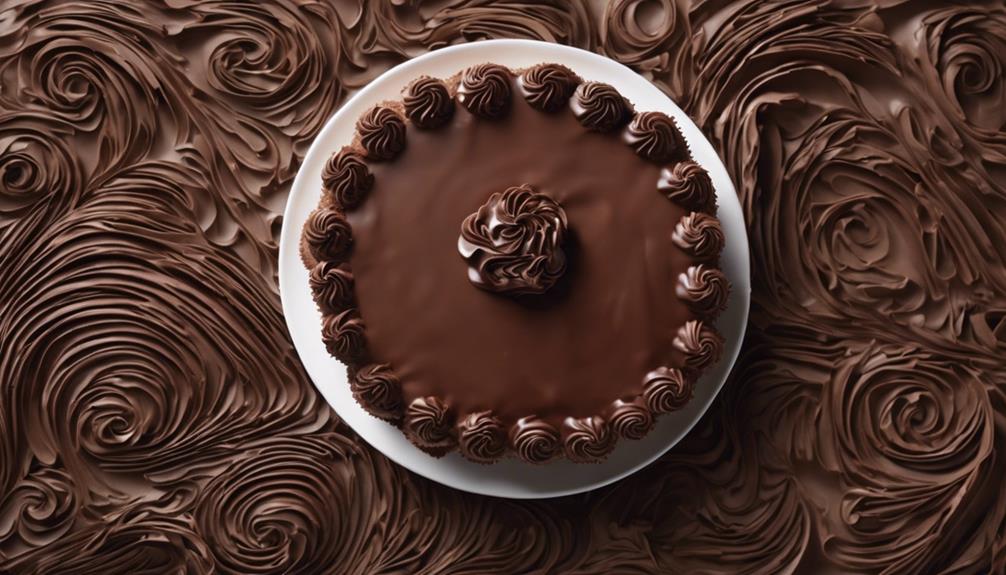
To create a luscious homemade chocolate frosting, start by combining semi-sweet chocolate chips and heavy whipping cream in the microwave. This forms a rich frosting base that will elevate your cake to new levels of deliciousness.
Once melted, refrigerate the chocolate mixture for about 30 minutes until it reaches a spreadable consistency. Using a baking spatula, gently spread the homemade chocolate frosting onto your cake layers, ensuring an even distribution for a decadent finish.
For a twist, try experimenting with different chocolate types like white or dark to add unique flavor profiles to your frosting. To enhance the visual appeal, consider incorporating decorative elements such as chocolate curls, chopped nuts, or even edible glitter.
These additions not only make your cake look stunning but also add varying textures and flavors that will impress your guests. Let your creativity shine as you adorn your cake with these delightful touches.
Add Creative Decorative Elements
Consider incorporating a variety of chocolate designs and garnishes to elevate the visual appeal of your chocolate cake decoration.
To create chocolate designs, pipe melted chocolate onto parchment paper and freeze them briefly before carefully placing them on your cake. Enhance the aesthetics with white chocolate drizzles, chocolate curls made using a vegetable peeler, and a sprinkle of chopped nuts or edible glitter for added flair.
Utilize a plastic squeeze bottle to elegantly squeeze melted chocolate over the cake's sides, creating a stunning decorative effect. For a professional touch, measure your cake's height, spread melted chocolate on it, and then wrap an acetate strip around it to achieve a polished chocolate wrap appearance.
Elevate the overall look by adding chocolate garnishes such as white chocolate curls, chopped nuts, or edible glitter. These creative elements won't only enhance the visual appeal but also add a delicious touch to your beautifully decorated chocolate cake.
Frequently Asked Questions
How to Decorate Chocolate Cake Simple?
Decorating a chocolate cake can be simple yet beautiful. Start with a crumb coat, add chocolate ganache drips, play with piping tips for designs, and top with chocolate curls or edible glitter. For a pro touch, try chocolate wrap.
How Do You Decorate a Cake in a Simple Way?
Decorating a cake simply involves using chocolate ganache, fresh berries, or edible flowers for color. Sprinkle cocoa or powdered sugar, create a chocolate drip effect, or add shavings for a sophisticated finish. It's easy and elegant.
What Are the 3 Tips for Preparing to Decorate a Cake?
I always gather tools and ingredients first, ensuring the cake cools completely. Level layers, prep toppings early, and decide on a design beforehand. These steps streamline the process and guarantee a successful cake decorating experience.
How to Decorate a Chocolate Cake Without Icing?
To decorate a chocolate cake without icing, I can use chocolate ganache, sprinkle powdered sugar or cocoa, add fresh berries or nuts, create patterns with chocolate shavings, or use stencils for decorative designs with powdered sugar.
Can I Use the Top 5 Techniques for Decorating Chocolate Cake in the 3 Simple Steps Method?
Sure, you can use the top 5 decorating chocolate cake techniques in the 3 simple steps method. First, prepare the cake and frosting. Then, apply the techniques such as piping, frosting flowers, or using edible decorations. Finally, step back and admire your beautifully decorated chocolate cake.
Conclusion
To sum up, decorating a chocolate cake is as easy as pie with these three simple steps.
Remember, practice makes perfect, so don't be afraid to get creative and experiment with different decorations.
With a little bit of patience and a lot of love, you can turn a plain cake into a masterpiece that will be the icing on the cake at any celebration.
So go ahead, let your imagination run wild and make your cake a piece of cake to remember!

